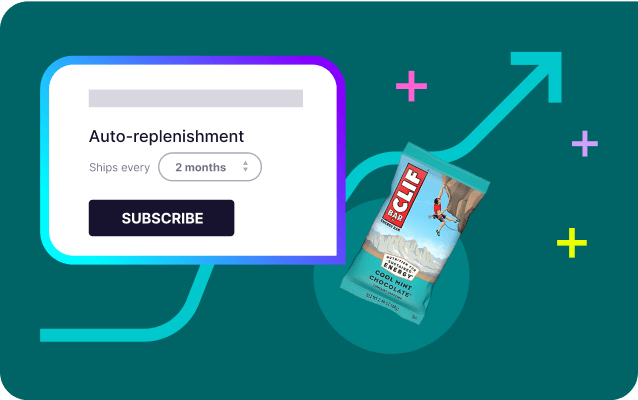The Complete Guide to eCommerce Subscriptions
- The subscription based business model: What is it and is it right for you?
- Introduction: The rise of eCommerce subscriptions
- The eCommerce subscription model: Understanding its 3 types
- 5 Benefits of subscription services
- 9 Crucial subscription eCommerce platform capabilities
- Your guide to the essential subscription integrations and apps
- How to start a subscription business in 6 steps
- 5 Subscription model best practices
- Take the effort out of subscriptions with Ordergroove
Introduction: The rise of eCommerce subscriptions

eCommerce subscriptions are here to stay. They are no longer a nice-to-have business model but essential for sustained growth. According to UnivDatos research, the global eCommerce subscription market is expected to hit $2.64 trillion by 2028.
“If subscription isn’t part of your retention strategy, it definitely should be,” said Shannon Wright, natural beauty brand Tata Harper’s eCommerce manager.
Tata Harper launched a subscription experience when, according to Shannon, the brand realized the value of having their products available to their clients “when they want them and where they want them.” A year after launching subscriptions, Tata Harper’s recurring revenue was up 112%.
Setting up an eCommerce subscription platform, however, can feel like an insurmountable task. For one thing, there are multiple eCommerce subscription models. But there are also technology, customer service, and operational considerations.
In this guide to eCommerce subscriptions, we share the key steps to getting your subscription experience off the ground and having it delight customers for years to come.
The subscription-based business model: What is it and is it right for you?
A subscription-based business model creates recurring revenue by shipping consumable products to subscribers on a regular basis.
While most products are suitable for a subscription eCommerce, there are several other factors to consider. This initial article helps you determine whether a subscription model in eCommerce is right for you before you invest in launching one.
The eCommerce subscription model: Understanding its 3 types
If an eCommerce subscription model is right for you, the next step is to adopt a specific type: subscribe and save, curation, or membership.
Each type has unique benefits and challenges. This article explains how to choose the one that aligns with your business goals.
5 benefits of subscription services
Recurring revenue is the most well-known benefit of subscription experiences. But did you know that a subscription eCommerce can also make your business more attractive to investors?
This article unpacks the five key benefits of subscription experiences and gives actionable tips for realizing them.
9 crucial subscription eCommerce platform capabilities
The only way to fully achieve the benefits of a subscription experience is to select an eCommerce subscription platform that gives your customers control and convenience.
Your eCommerce subscription platform should make it easy for customers to turn a one-off purchase into a subscription and manage the cadence of their shipments. It must also contain a rich analytics dashboard, so you can track the program’s growth. This article explains what to consider when vetting subscription eCommerce platform providers.
Your guide to the essential eCommerce subscription integrations and apps
Even the best subscription eCommerce platforms benefit from integrations and apps. An integration with an SMS provider, for example, can alert subscribers when a shipment is about to go out. This prompt gives them the opportunity to skip the shipment if they wish.
This article lists the key apps and integrations to consider as you plan your subscription experience.
How to start a subscription business in 6 steps
If you adequately plan the launch of your subscription experience, you’ll see better customer acquisition and retention rates.
From sizing up your competition to choosing the right success metrics, this article lays out the key steps to follow in preparation for your subscription eCommerce experience launch.
7 subscription model best practices
Once you launch your subscription eCommerce experience, you must never lose sight of the best practices that give subscribers the convenience and value they want.
This article reveals seven best practices that can help your subscription stand out from the competition.
Take the effort out of subscriptions with Ordergroove
Want to launch an eCommerce subscription experience? In this chapter, we walk through Ordergroove’s out-of-the-box, scalable solution, including how we accelerate subscriber enrollment, boost retention, and grow average order value.